Activists, residents say high time some answers and responsibility were forced out of authorities for paralysing city with haphazardly dug roads
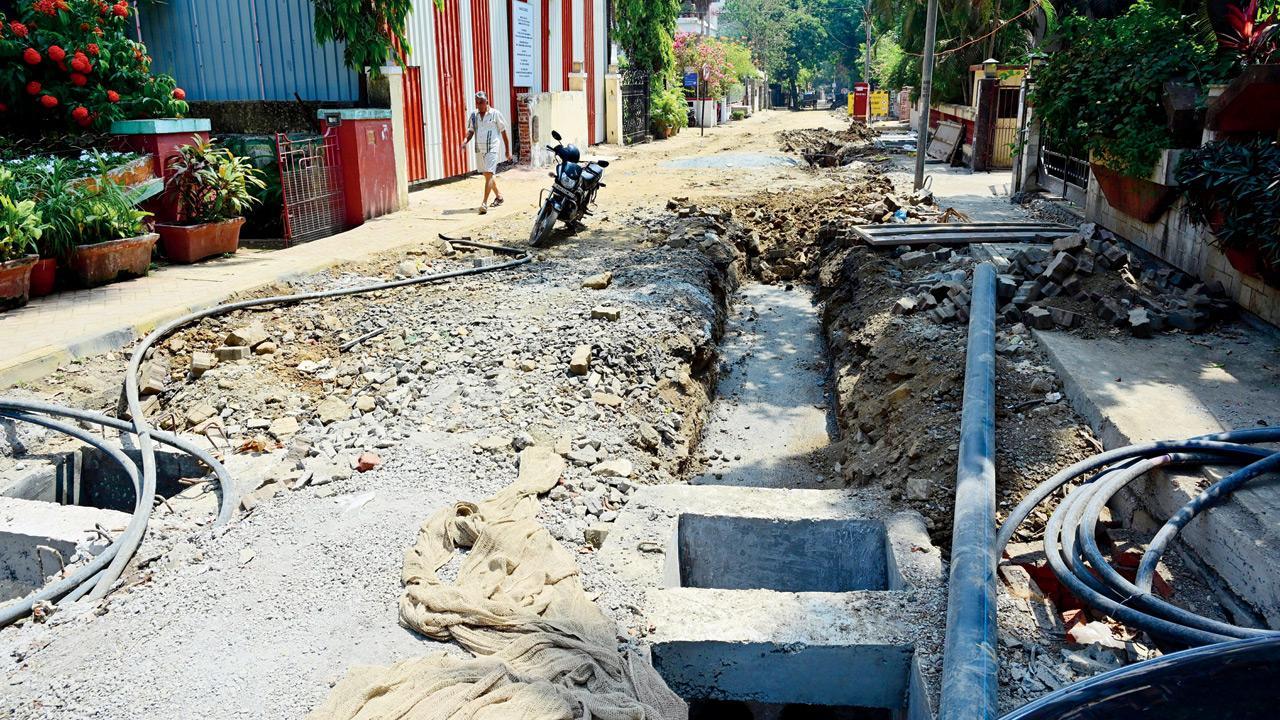
St Roque Road dug up at Bandra West on April 4. File Pic/Shadab Khan
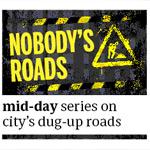 As mid-day wraps up its special campaign ‘Roads to Nowhere’, we bring the spotlight onto voices that matter—those pushing for accountability, accessibility, and intelligent design amid Mumbai’s ongoing infrastructure overhaul and chaos.
As mid-day wraps up its special campaign ‘Roads to Nowhere’, we bring the spotlight onto voices that matter—those pushing for accountability, accessibility, and intelligent design amid Mumbai’s ongoing infrastructure overhaul and chaos.
For the past several months, Mumbai has resembled a city in surgical repair—roads dug up across neighbourhoods, footpaths vanishing beneath heaps of debris, and traffic bottlenecks turning daily commutes into obstacle courses. With the BMC’s ambitious plan to concrete 413 km of roads across its 437.71 sq km jurisdiction, the financial capital has transformed into a massive, ongoing worksite. But beneath the cranes, drills, and broken tiles lies a deeper story of neglect, poor planning, and a growing demand for civic accountability.
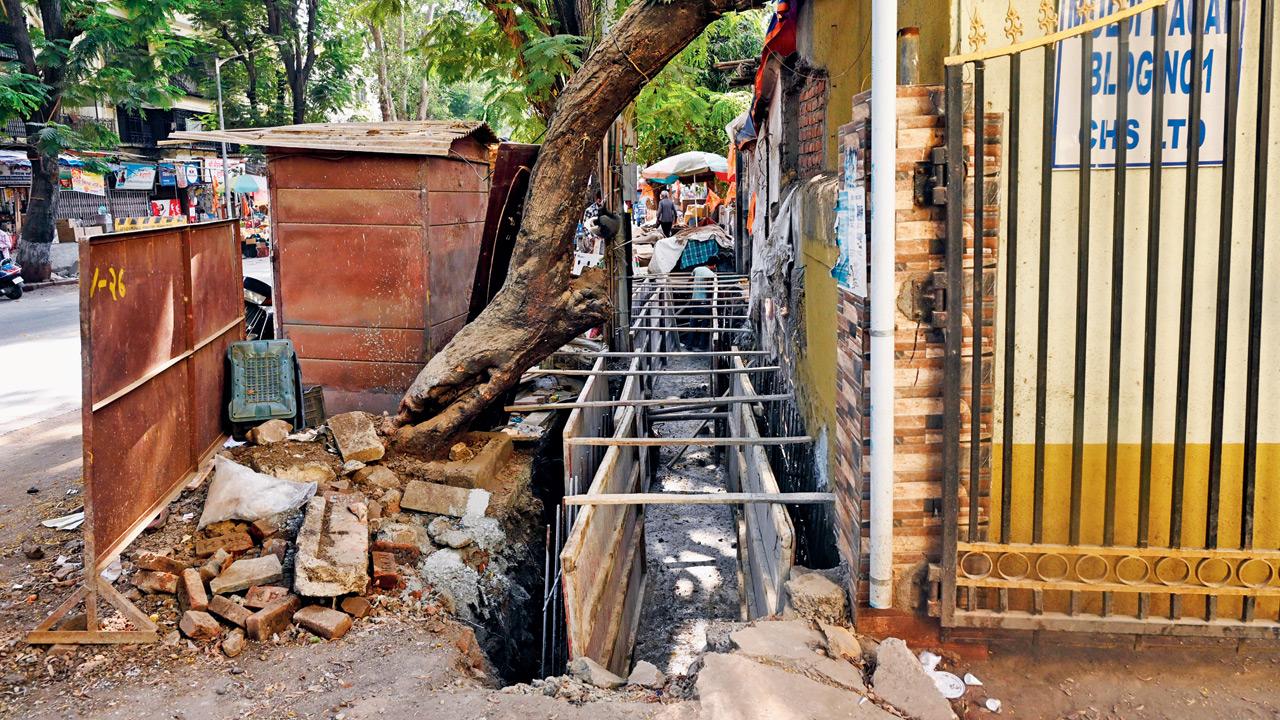
Hawkers and parked vehicles occupy Saibaba Mandir Road amid drainage work in Borivli West. Pic/Satej Shinde
As part of mid-day’s campaign ‘Roads to Nowhere’, we spoke to experts, accessibility advocates and citizen activists who are raising red flags about how this ‘transformation’ is being executed—and why Mumbaikars must demand better.
Milind Mhaske, CEO of Praja Foundation, emphasised that the BMC must approach Mumbai’s infrastructure overhaul with a comprehensive and people-centric vision. He highlighted the importance of adopting an urban design that prioritises non-motorised transport, walkability and inclusive access for children, senior citizens and persons with disabilities.
Development an opportunity
“Mumbaikars need to pick the right debate. Instead of simply criticising the BMC for the ongoing road concreting, we should ask: how is this work being done, and how can it be improved?” Mhaske said.
“I don’t see this scale of development as a problem—I see it as an opportunity. Since we often lack comprehensive planning, this citywide effort gives us a rare chance to design systematically, with uniform aesthetics, accessible infrastructure, and improved connectivity. Let’s use this moment to push for urban design that is people-centric, not car-centric. Planning must include provisions for non-motorised transport, pedestrian pathways, and truly inclusive infrastructure,” he added.
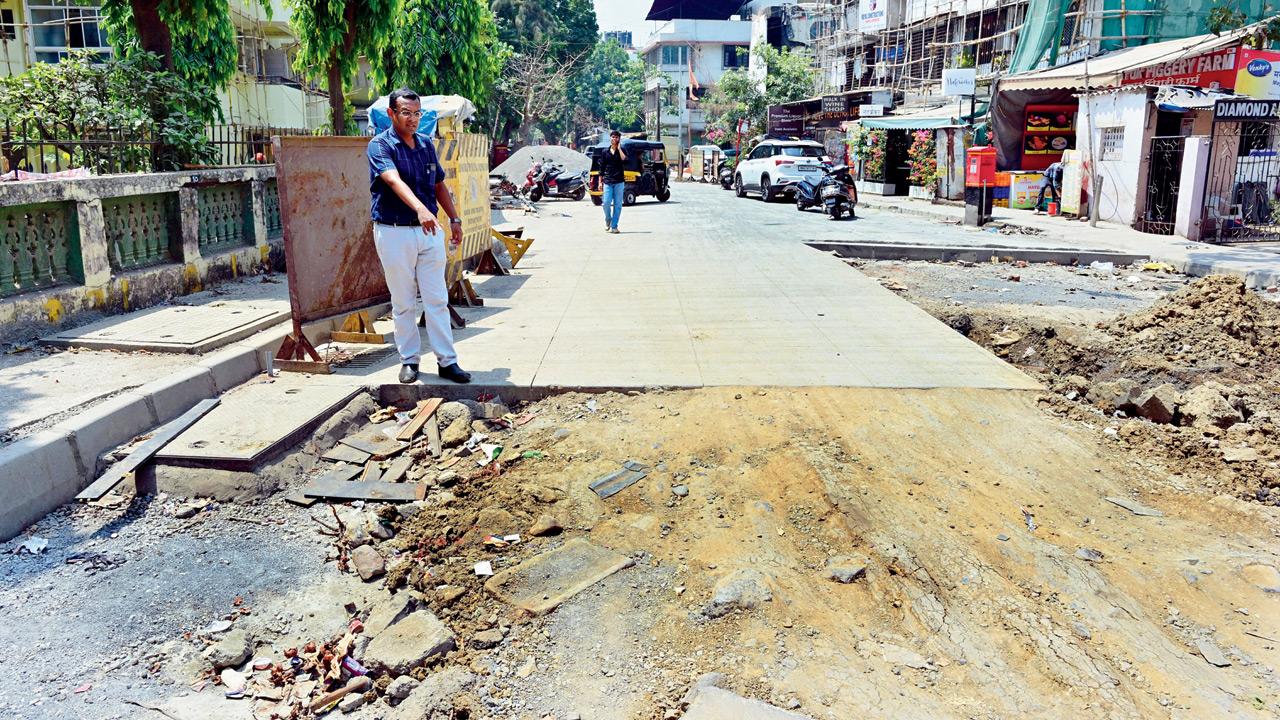
John Baptist Road, which has been dug up, at Bandra West on April 6. PIC/SHADAB KHAN
Mhaske also stressed the need for sustainability. “Are we using materials that align with long-term climate goals and help mitigate the urban heat island effect? Are we integrating soak points, green patches, and plantations to support ecological balance and groundwater recharge? If we focus on quality, planning, and purpose, this transformation can redefine Mumbai—not just as a city of roads, but as one designed for its people,” he said.
Accessible infrastructure
Siddharth Mhatre, a wheelchair user with cerebral palsy and a resident of Dadar Parsi Colony, has been actively pushing to make his neighbourhood more accessible for those with mobility challenges. Whether it’s wheelchair users, people on crutches, or senior citizens with walking sticks, Mhatre has consistently advocated for inclusive, user-friendly infrastructure.
“Accessibility isn’t a luxury—it’s a basic right,” Mhatre said. “In Dadar Parsi Colony, I’ve been pushing for practical changes. For instance, bollards should stop motorcycles from entering footpaths but still allow wheelchairs through. I’m not asking just for myself—this is for everyone facing barriers daily across Mumbai.”
Highlighting key issues, he said, “Three groups are consistently affected—persons with disabilities using wheelchairs, those walking with crutches, and elderly citizens using sticks. Simply accessing the footpath is a challenge. Surfaces are uneven, tiles are broken or missing, and encroachments leave little usable space. The road-to-footpath transition is abrupt and dangerous.”
Mhatre added that ramps must be part of the initial design—not afterthoughts. “They should be gentle, non-slip, and have sturdy railings. Tactile tiles should be installed across all city footpaths—not just token stretches—so visually impaired citizens can navigate safely.”
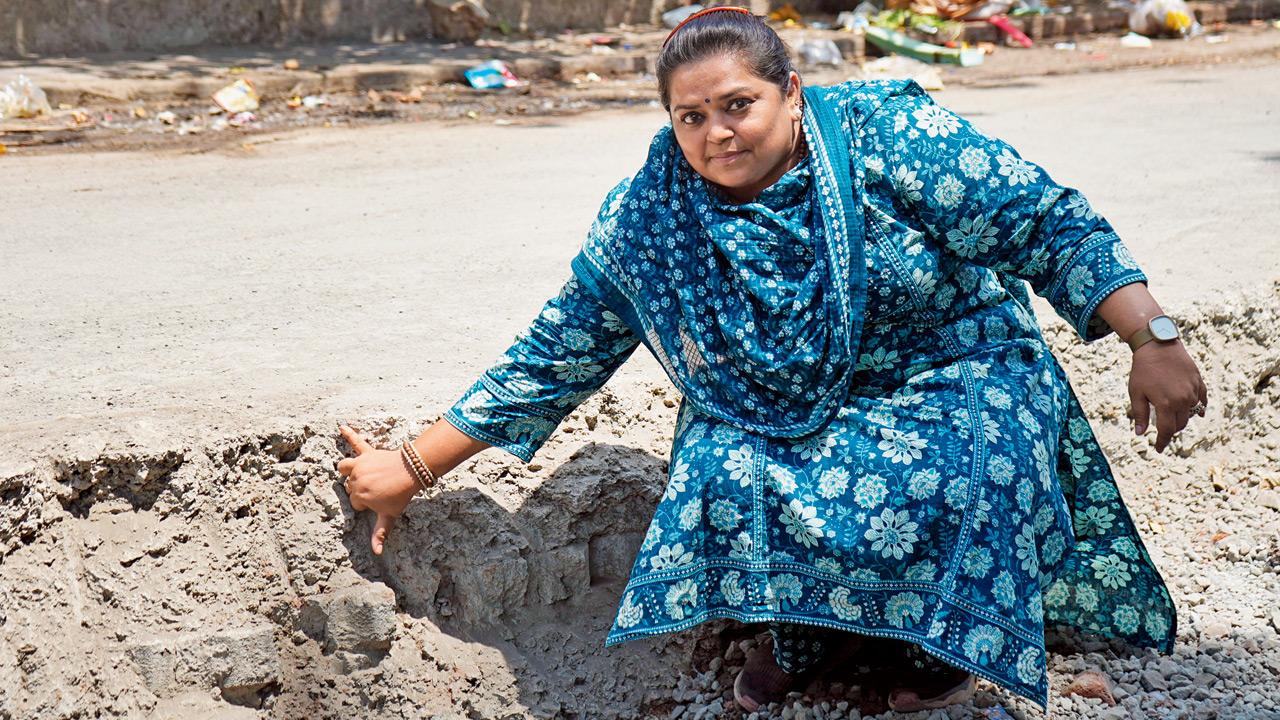
Sheetal Mhatre has been auditing concreting in IC Colony, Eksar and Gorai. Pic/Dweep Bane
As a Wheelchair Sports Facilitator, Mhatre has worked with people across the mobility spectrum. “The feedback is the same: we need dignity in movement. No one should feel unsafe or unwelcome on city streets. The BMC must embed accessibility from day one, not treat it as an optional extra,” he said.
Gopal Jhaveri, Borivli resident and founder of Mumbai March and Road March—citizen-led campaigns for civic accountability—expressed concern about deteriorating standards in road infrastructure work. “There’s a complete lack of accountability and transparency. The process is marred by inefficiency, mismanagement and, often, corruption. There’s no uniformity in road or footpath design. Road levels often mismatch adjoining surfaces, creating dangerous slopes, posing risks to both pedestrians and motorists, and causing waterlogging,” he said.
He added, “We’ve long demanded real-time, publicly accessible information on all road and footpath works. Every project—whether repairs, concretisation, duct laying, or drainage—should be geotagged and available on platforms like Google Maps. Citizens should be able to click any road and view its history: last repair, cost, contractor, warranty. Public access to this data will promote transparency and accountability.”
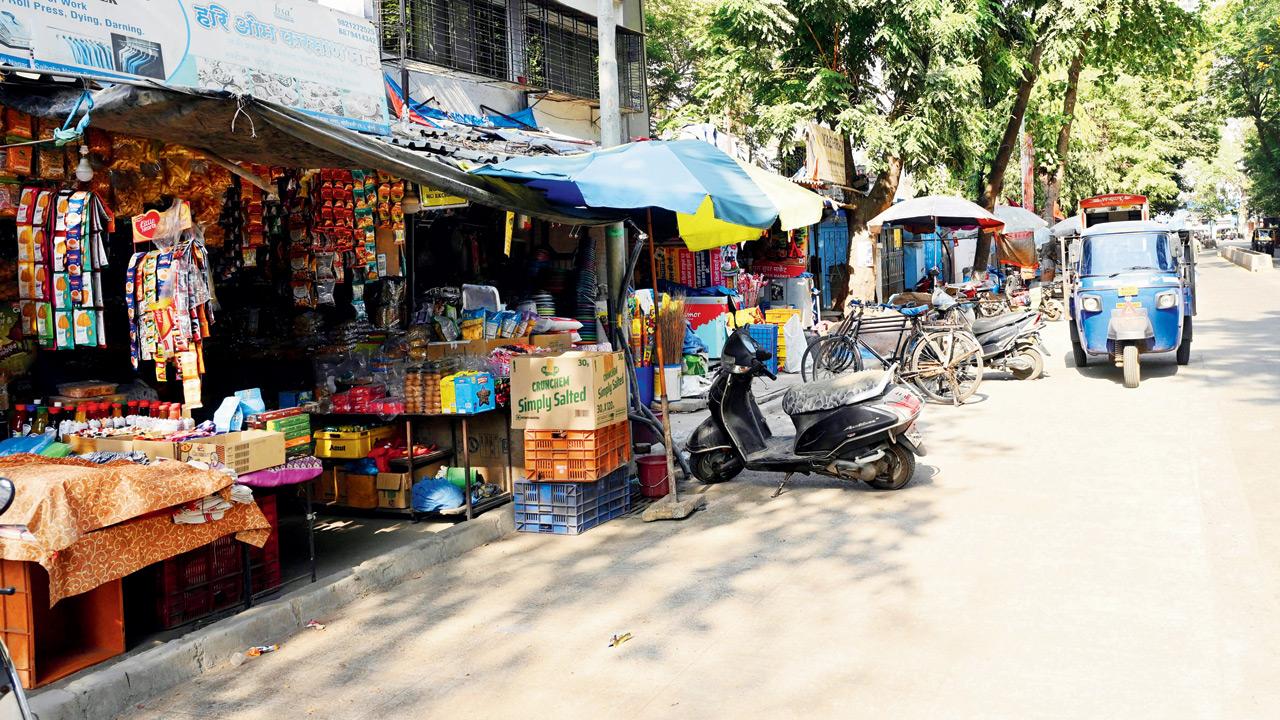
Shopkeepers’ goods occupy the footpath of Saibaba Mandir Road in Borivli West a few months ago. PIC/SATEJ SHINDE
Jhaveri cited the footpath and road along Kasturba Marg, next to the Borivli police station, which was dug up three times between 2021 and 2022. “We’ve repeatedly asked the BMC to map such repeated works and link them to digital road names. Even now, concrete is being poured during peak heat, without proper water sprinkling. This leads to cracks due to thermal stress. In their rush to finish before the monsoon, contractors are compromising quality.”
Experts recommend concrete be poured during cooler evening hours for proper curing. “If the current approach continues, we’ll be re-digging these roads in months, wasting taxpayer money,”
Jhaveri warned.
Questions raised
The Opposition has intensified criticism of the ruling party and the BMC over Mumbai’s dug-up roads. Responding to growing citizen frustration, the Mumbai Congress launched a social media campaign titled #NoCorruptionMeriGullyMein. Led by MP Varsha Gaikwad, the campaign calls on Mumbaikars to post photos and videos of damaged or incomplete roadwork in their areas.
The campaign’s tagline—“Mumbai deserves better roads, not bigger scams”—aims to mobilise residents demanding accountability. It highlights roads dug up for no apparent reason, works abandoned midway, newly built roads re-destroyed, and streets where walking feels like an obstacle course.
Sheetal Mhatre, former Congress corporator from Borivli, has been auditing ongoing concreting in IC Colony, Eksar and Gorai. Her inspections have revealed violations of engineering norms and basic logic. “This has gone on for years. They do substandard work, dig it up again, and repeat the cycle. It’s the same scam all over Mumbai,” she alleged.
Mhatre added that BMC officials are often absent from sites, leaving contractors unsupervised. “There are no traffic wardens, and dust from construction goes unchecked. Isn’t that a scam?” she asked.
In another campaign, disability rights activist Virali Modi, along with Jhatkaa.org, has launched a petition demanding Mumbai’s infrastructure be made accessible to all. The petition criticises the BMC for failing to implement its 2023 ‘Samavesh’ project to make the city inclusive.
“Under the Rights of Persons with Disabilities Act, 2016, the BMC is legally required to ensure accessibility. Yet, streets, footpaths, and transit hubs remain out of reach. You can make gardens as accessible as you want—but if the roads and footpaths aren’t, what’s the point?” Modi asks in the petition.
 Subscribe today by clicking the link and stay updated with the latest news!" Click here!
Subscribe today by clicking the link and stay updated with the latest news!" Click here!








